Articles
CARTOONING LEGENDS RALLY TO PROTECT FREEDOM TO READ AT CBLDF BENEFIT BRUNCH!
By Charles Brownstein – 11/132013
Last Sunday, cartooning legends assembled at the Society of Illustrators in New York City to support the Comic Book Legal Defense Fund’s Kids Right to Read program. Jeff 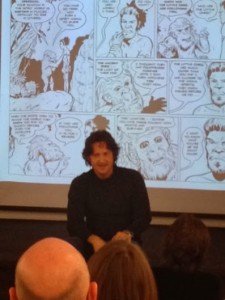 Smith, creator of “Bone” and CBLDF board member, hosted the event. He welcomed CBLDF supporters and guests of honor, including “Mutts” creator Patrick McDonnell, “Battling Boy” author Paul Pope, “Amelia Rules!” creator Jimmy Gownley, The New Yorker cartoonists Liza Donnelly and Michael Maslin, and “Beanworld” author and CBLDF President Larry Marder. Everyone who attended this exclusive event enjoyed an unforgettable afternoon celebrating comics and the freedom to read.
Smith, creator of “Bone” and CBLDF board member, hosted the event. He welcomed CBLDF supporters and guests of honor, including “Mutts” creator Patrick McDonnell, “Battling Boy” author Paul Pope, “Amelia Rules!” creator Jimmy Gownley, The New Yorker cartoonists Liza Donnelly and Michael Maslin, and “Beanworld” author and CBLDF President Larry Marder. Everyone who attended this exclusive event enjoyed an unforgettable afternoon celebrating comics and the freedom to read.
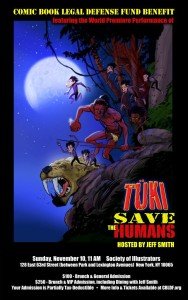 Before enjoying original artwork in the Society’s galleries, guests were treated to the premiere of Smith’s new series, “Tuki Save the Humans,” which Smith read to live music. Pope took attendees on a personal tour of his “Battling Boy” art show, currently hanging in the Society gallery, while Donnelly and Maslin were on hand to talk about the dozens of illustrations from their extensive collection on view in the Hall of Fame gallery.
Before enjoying original artwork in the Society’s galleries, guests were treated to the premiere of Smith’s new series, “Tuki Save the Humans,” which Smith read to live music. Pope took attendees on a personal tour of his “Battling Boy” art show, currently hanging in the Society gallery, while Donnelly and Maslin were on hand to talk about the dozens of illustrations from their extensive collection on view in the Hall of Fame gallery.
Following Smith’s reading and a Q&A, guests retired to the Society’s famed dining room to enjoy an extraordinary brunch alongside these comics greats. As guests departed, they received a gift bag that included Jimmy Gownley’s new comics memoir “The Dumbest Idea Ever!” and an exclusive souvenir print signed by Smith. This magical afternoon raised nearly $5,000 for CBLDF’s efforts on behalf of the freedom to read!
CBLDF RELEASES RAISING A READER, A RESOURCE FOR PARENTS AND EDUCATORS
By Betsy Gomez – 7/15/2013
The Comic Book Legal Defense Fund is proud to release “Raising a Reader! How Comics & Graphic Novels Can Help Your Kids Love To Read!,” a new resource for parents and educators about the learning benefits of comics! This new resource is written by Dr. Meryl Jaffe, with an introduction by three-time Newbery Award honoree Jennifer L. Holm (“Babymouse”, “Squish”) and art by Eisner Award winner Raina Telgemeier (“Smile,” “Drama”) and Eisner Award nominee Matthew Holm (“Babymouse”, “Squish”). “Raising a Reader!” was made possible by a grant from the Gaiman Foundation. A digital edition premieres this week on comiXology, with a print version premiering at CBLDF booth #1920 at Comic-Con International: San Diego.
“Comics are an incredible tool for helping create a genuine love of reading,” said Jennifer L. Holm, who also serves on the CBLDF Board of Directors. “With Raising A Reader!, we set out to create a resource all about what graphic novels offer kids that includes vital information about how to read comics, how to create reading dialogues with them, and how comics are important tools for 21st century learners. We’re very proud of the work Dr. Jaffe has done to make “Raising a Reader!” an accessible yet information-filled resource for parents and educators.”
“Raising a Reader!” answers the questions parents and educators bring to using comics: What skills do graphic novels offer kids? What resources are available for using graphic novels in education? How do you teach reading with a comics page? How can graphic novels create reading dialogues? And much more!
Please visit www.cbldf.org to download a copy of “Raising A Reader,” and be sure to stop by CBLDF booth #1920 at Comic-Con International to get your copy!
About Meryl Jaffe, PhD Meryl Jaffe, PhD, teaches visual literacy and critical reading at Johns Hopkins University Center for Talented Youth On-Line Division and is co-author of Using Content-Area Graphic Texts for Learning. She used to encourage the “classics” to the exclusion of comics, but with her kids’ intervention, Meryl has become an avid graphic novel fan. She now incorporates them in her work, believing that the educational process must reflect the imagination and intellectual flexibility it hopes to nurture. Meryl hopes to empower educators and encourage an ongoing dialogue promoting kids’ right to read while utilizing the rich educational opportunities graphic novels have to offer. More information can be found at www.departingthetext.blogspot.com.
About Jennifer L. Holm Jennifer L. Holm is a New York Times bestselling children’s author and the recipient of three Newbery Honors for her novels “Our Only May Amelia,” “Penny from Heaven,” and “Turtle in Paradise.” Jennifer collaborates with her brother, Matthew Holm, on two graphic novel series — the popular “Babymouse” series and the bestselling “Squish” series. She is also the author of several other highly praised books, including the Boston Jane trilogy and “Middle School is Worse than Meatloaf.’
MISSISSIPPI CHILDREN LEARN WITH BLUES CURRICULUM
By Emily Wagster-Pettus
Associated Press 12/30/2013 TUNICA, Miss
Educators say music-based approach helps kids absorb lessons on many subjects. In cotton country a couple miles east of the Mississippi River, just off a road known as the blues highway, fourth-graders at Tunica Elementary School are exploring the Delta’s homegrown music to learn about rhythm, rhyme and chord progression. Their teacher is also using the new Mississippi Blues Trail Curriculum to help the children absorb information in unexpected ways. 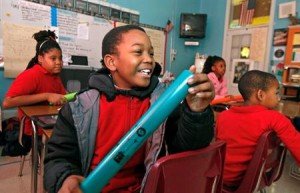
Chevonne Dixon is one of the first teachers in the state to incorporate the blues into science, math, social studies and English lessons. So far this school year, the 9- and 10-year-olds in her class have written blues songs about the weather. They’ve composed short ditties about the travails of being a kid. And they’ve read classic blues lyrics to learn the challenges of growing cotton. “It makes them recall information, especially with that slow, melodic sound,” said Dixon, who leads her classroom with a calm demeanor that brings out a quiet, respectful manner in the children.
Tunica Elementary sits just off of U.S. Highway 61, the blues highway that meanders south out of Memphis, Tenn., and down through the cotton and soybeans fields of the flat Mississippi Delta. Tunica County used to be one of the poorest places in the United States, but about 20 years ago the local economy started to perk up with the arrival of casinos on the Mississippi River. Still, Dixon says more than 90 percent of the students in the school qualify for free or reduced- price lunches — an indication of lingering poverty in a region where many of the children’s parents and grandparents are unemployed or work part-time agriculture jobs.
In 2006, scholars and tourism promoters started working together on the Mississippi Blues Trail, a series of highway markers that provide information about people, places and events significant in developing the hardscrabble music that influenced rock ’n’ roll. The trail is a magnet for music aficionados, especially European and Asian travelers seeking an off-the-beaten- path experience of American culture — something other than theme parks and big cities. The Blues Trail Curriculum draws on research that was done for the highway markers. Mark Malone, a music professor at William Carey University, designed the curriculum with help from Scott Barretta, a blues scholar at the University of Mississippi. The Mississippi Arts Commission made the Blues Trail Curriculum available this school year. It’s aimed at fourth-graders who are learning state history, but it can be altered for younger and older students. Its lessons focus on six main areas: music, meaning, cotton, transportation, civil rights and media. And while some traditional blues music has distinctly adult themed lyrics about drinking, carousing or working for the man, the curriculum presents age-appropriate themes.
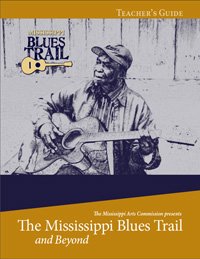 On a crisp December morning, Dixon’s classroom is toasty warm. The 16 students wear uniforms of khaki pants with blue, red or yellow knit shirts. They quickly go from wiggly to quiet as Dixon clicks on a recording of Malone singing “Homework Blues,” accompanied by simple piano notes. It is call and response — he sings a phrase, the children echo it: “I have lots of homework now… Social studies, science and math, oh wow.” When the song is over, Dixon tells the students to work in groups of four and think about problems they face as fourth graders: “We’re going to see if you can come up with your own blues song.”
On a crisp December morning, Dixon’s classroom is toasty warm. The 16 students wear uniforms of khaki pants with blue, red or yellow knit shirts. They quickly go from wiggly to quiet as Dixon clicks on a recording of Malone singing “Homework Blues,” accompanied by simple piano notes. It is call and response — he sings a phrase, the children echo it: “I have lots of homework now… Social studies, science and math, oh wow.” When the song is over, Dixon tells the students to work in groups of four and think about problems they face as fourth graders: “We’re going to see if you can come up with your own blues song.”
One group writes about reading. Another writes about art. Two write about math. After five minutes, they sing what they’ve written, in call-and-response with their classmates: “Comparing fractions is so hard… It’s easier to put it on a math chart.”
The children read lyrics of “Cotton Crop Blues” by James Cotton, a blues harmonica player born in 1935 in Tunica County. Each group of four students creates a tableau, standing like statues to depict what the song is saying: “Well, raising a good cotton crop… Just like a lucky man shootin’ dice… Work all the summer… To make your cotton… When fall comes… It still ain’t no price.”
Jimmarious Frazier, one of Dixon’s students, said he found it interesting to learn about boll weevils, the bugs that can ruin cotton crops. “My daddy chops cotton and plants seeds. He gets paid for it,” Jimmarious said.
Tom Pearson, executive director of the Mississippi Arts Commission, said the Blues Curriculum gives children a sense of place. “I think it’s important that they understand their local history first — understand it and how it relates to the world,” he said. Come January, Dixon will use the blues to teach the youngsters about civil rights. Tunica Elementary Principal Eva McCool-O’Neil said she hopes to expand the Blues Trail Curriculum to other classrooms next year. “I see student engagement really, really, really high,” she said. “Students love to do things other than just the traditional.”
A HIP-HOP EXPERIMENT
By Nicole Bengiveno
NY Times
11/16/12
They are an unlikely team of educational reformers.
ENGAGEMENT GZA, a rapper, is working with Dr. Emdin on a pilot program to teach science using hip-hop.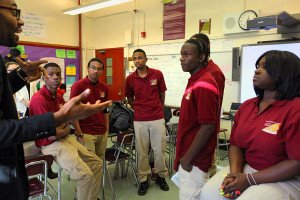
Christopher Emdin is a Columbia University professor who likes to declaim Newton’s laws in rhyme. GZA is a member of the Wu-Tang Clan who left school in 10th grade. When the two men met this summer, at a radio show hosted by Neil deGrasse Tyson, the director of the Hayden Planetarium, they started talking about science and education — particularly, why science classrooms were failing to engage many African-American and Latino students, who together make up 70 percent of New York City’s student body. Only 4 percent of African-American seniors nationally were proficient in sciences, compared with 27 percent of whites, according to the 2009 National Assessment of Educational Progress.
GZA, 46, who was born Gary Grice, had just finished an extraordinary round of meetings with physicists at Harvard and the Massachusetts Institute of Technology, culling ideas for a coming solo album about the cosmos. Dr. Emdin, 34, an assistant professor of science education at Teachers College, was a lifelong hip-hop fan. They discovered a shared interest in merging their two worlds: GZA by bringing science into hip-hop; Dr. Emdin by bringing hip-hop into the science classroom.
Next month, the two men, along with the popular hip-hop lyrics Web site Rap Genius, will announce a pilot project to use hip-hop to teach science in 10 New York City public schools. The pilot is small, but its architects’ goals are not modest. Dr. Emdin, who has written a book called “Urban Science Education for the Hip-Hop Generation,” hopes to change the way city teachers relate to minority students, drawing not just on hip-hop’s rhymes, but also on its social practices and values.
Rap Genius, which recently received a $15 million investment from the venture capital firm Andreessen Horowitz, hopes to expand its site, where users annotate lyrics, into education.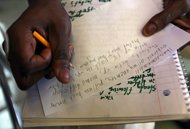 And GZA saw a potential hit: “You never know,” he said of their collaboration. “This could turn into something in the future as big as the spelling bee.”
And GZA saw a potential hit: “You never know,” he said of their collaboration. “This could turn into something in the future as big as the spelling bee.”
On a recent afternoon in his office at Teachers College, Dr. Emdin likened the skills required for success in science to those of a good rapper: curiosity, keen observation, an ability to use metaphor and draw connections. Moreover, he said, the medium itself provided a model that could be more effective than traditional science instruction, in which teachers stand in front of classes delivering information, then judge students by their ability to repeat it on tests.
By contrast, in what is known as a hip-hop “cypher,” participants stand in a circle and take turns rapping, often supporting or playing off one another’s rhymes.
“A hip-hop cypher is the perfect pedagogical moment, where someone’s at the helm of a conversation, and then one person stops and another picks up,” Dr. Emdin said, his checked bow tie bobbing under his chin. “There are equal turns at talking. When somebody has a great line, the whole audience makes a ‘whoo,’ which is positive reinforcement.”
He added, “All of those things that are happening in the hip-hop cypher are what should happen in an ideal classroom.”
Starting in January, the 10 schools, with support from Dr. Emdin and his graduate students, will experiment with cyphers and rhymes to teach basic science concepts — one class per school, one day per week. The students will write rhymes in lieu of papers; the best rhymes, as judged by GZA, will appear on Rap Genius, beside the lyrics of popular hits. The program fits into a broader educational movement to use students’ outside interests to engage them in class work.
When GZA (pronounced JIZ-ah, a play on “genius”) heard Dr. Emdin’s spiel, it resonated with his own school experiences. Growing up in the Park Hill Houses on Staten Island, he was curious about the physical world but bored with school. Hip-hop became his outlet for showing off intellectually.
“It was always about crafting the best rhyme in the most articulate, witty or smart way,” he said. “For us, it was always about educating the listener.”
It took him more than two decades to develop his curiosity about science into “Dark Matter,” an album now in the writing stage, which he hopes will bring his fans to astrophysics, starting with the Big Bang.
David Kaiser, a physicist at M.I.T. who met with GZA in December and again this spring, said he was impressed. “He’s read a lot of books and asked really well-informed questions,” said Dr. Kaiser, 41, who is not a fan of rap. “It was fun to see how excited he was about science.”
More than that, Dr. Kaiser said, GZA might attract African-American and Latino students to the sciences, where they are strongly underrepresented.
“It’s a topic of steady attention at M.I.T. and around the country,” he said. “When I see someone like GZA, who is excited and has a voice and is looked up to, I’m delighted that he wants to communicate that excitement to people who might not be pursuing it.”
Dr. Emdin, too, is hoping that GZA’s presence — appearing in a video for students, possibly visiting a few classrooms, judging the students’ raps — will undercut the students’ fear of  science, or the stereotype that scientists are all white people.
science, or the stereotype that scientists are all white people.
During a lunch hour counseling session at the Urban Assembly School for the Performing Arts in Harlem last week, Ian Levy, 23, one of Dr. Emdin’s graduate students, led nine high-school students in a hip-hop cypher designed to further their emotional development. The students stood in a circle and took turns reciting rhymes about their lives.
Unique Clay rapped about hearing gunshots while he wrote his rhymes; Michael Johnson rapped about an abused 6-year-old; Cai Moore punned on the name Peter Piper, but fizzled after a few lines; Anna Zivian, a teacher, rapped about having three mothers. Mr. Levy rapped as well.
Dr. Emdin, who was visiting, liked what he saw: the eye contact, the effort behind the writing, the peer support.
“Kids relate best when they’re standing up,” he said. “The teacher can measure engagement by the hand gestures and head bobs. And when the last kid couldn’t finish his verse, everybody gave him encouragement. In a traditional school, he’d have failed. We need to expand the notion of what success is.”
For schools adopting the program, though, Dr. Emdin’s approach is as yet unproven. And Rap Genius has recently drawn criticism for racist comments posted in a chat forum by two of its editors.
Rodney Fisher, the principal at the Marie Curie School for Medicine, Nursing and Health Professions in the Bronx, where Dr. Emdin developed his methods as a young high school teacher, spoke highly of Dr. Emdin’s classroom record. He had improved his students’ assessments, pass rates and attendance levels, Mr. Fisher said, though he added that this might simply be because Dr. Emdin was a good, passionate teacher.
“Science and math are the hardest to get students interested in,” Mr. Fisher, 44, said. “His students became invested in physics, able to identify terminology or vocabulary, and also able to use that to apply scientific formulas.”
Dr. Tyson, the planetarium director, said he saw a thread of science geekery lurking in hip-hop, where delivering knowledge is called “dropping science.” A few songs — by PiGPEN, among others — even mention Dr. Tyson by name. GZA compared this latent interest in science to interest in chess — an early Wu-Tang obsession that has recently flourished in city schools.
If that proves to be the case, Dr. Tyson said, Dr. Emdin’s experiment might have broader implications.
“It’s clear that Chris has a vision and energy level,” Dr. Tyson said. “To the extent it’s transplantable, that can make what he’s up to quite fertile and important.”
12 FASCINATING WAYS TO USE DRAMA IN THE CURRICULUM
By: Loriana Romano, Lisa Papa, and Elita Saulle
The History of Drama in Education
The use of drama has been used over the course of history from the time of Aristotle, who believed that theatre provided people a way to release emotions, right to the beginning of the progressive movement in education, where emphasis was placed upon “doing” rather than memorizing. Integrating drama helps children in various ways. In this fantastic resource: ‘The Arts as Meaning Makers’, written by Claudia E. Cornett and Katharine L. Smithrim, there are 12 essential points that we strongly agree to be important to consider:
1. Drama is part of real life and prepares students to deal with life’s problems. Drama simply allows students the opportunity to rehearse roles, further giving form or shape to the individual and personal ideas and feelings they are naturally experiencing. Overall, this allows students to make sense out of their ‘real’ life problems.
2. Drama engages students in creative problem-solving and decision making Deep experiences through drama guides and supports student’s problem solving skills, while at the same time, works to encourage an increasing awareness in how to solve issues at hand. Instead of school just being a place where students are being taught and told what to think and feel, drama turns this into a deeper experience in thinking, further motivating students to question, respond, and explain what they are feeling and thinking.
3. Drama develops verbal and nonverbal communication. Through different characters, students share the opportunity to expand their problem solving skills both verbally and non-verbally, making room for a sense of creativity. As well, students practice and build upon various communication skills through the use of body language, facial expressions and different voices.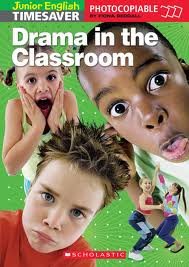
4. Drama can enhance students’ psychological well-being. Under different characters, students can express their true feelings or sense of personality without fear of being judged or criticized. They can work on personal issue or solve personal problems while in character, which can simply help their overall well-being. Essentially, what this does is allow students to get things off their mind, further releasing emotion and tension and allowing students to be who they are.
5. Drama develops empathy and new perspectives. Taking on various roles in character allows students to use all senses and characteristics in order to understand the character, as well as, the scenario or story at hand. Learning how to express oneself in different ways and through different means, helps build a strong character and personality.
6. Drama builds cooperation and develops other social skills. Working together as a group promotes, encourages and motivates cooperation. It is essential that each of our students feels accepted and works well with others, in order to create and build a safe environment for all to learn. What drama does is continues to build on this importance. Drama simply brings students together, allowing them to find different characters that best suits them, different roles to express who they are, and different ways to build upon and develop social awareness.
7. Drama increases concentration and comprehension through engagement. Students always learn best when they are engaged and interested, as well as, when they are actively involved. As students are strongly focused and concentrating, their overall understanding simply increases. When we include students in our examples in class, it is more likely that they will grasp the idea more, or make a concrete connection. Drama allows us to do this with our students.
8. Drama helps students consider moral issues and develop values. Drama simply helps students further understand the importance of values they are already aware of, as well as, it guides them in developing and forming additional values. As teachers, it is essential that we allow students the space and opportunity to make this discovery and connection in values and moral issues while they are engaged through drama, rather than impose them.
9. Drama is an alternative way to assess by observing (ex. Externalization). When teaching new lessons, we always depend on prior knowledge. We start with what students know, which further guides us with the next step to take in our teaching. It is difficult for some of our students to make sense of specific things which is simply where drama fits in. Drama can be used to preview or review a lesson; further allowing teachers to assess what students already know or have learned.
10. Drama is entertaining. Fun is learning, and learning is fun. If we remember this and try to incorporate fun in our teaching, our students will definitely enjoy the learning process. Students enjoy dealing with and discussing real life issues and problems, they like figuring things out, doing interesting things, doing things differently – drama gears towards this and more.
11. Drama contributes to aesthetic development. Through drama, students learn about a number of things such as conflict and characters, which further allows them to deepen their sensory awareness. In addition to, children also learn how to express themselves through various teaching and learning strategies such as dialogue and improvisation.
12. Drama offers a learning avenue that enhances other areas of the curriculum. Drama can be used as a teaching and learning tool to help students make meaning of a number of skills they need to be a well-rounded individual. It further allows them to experience and explore the world around them through different characters and roles, further building on their relationship with others and things.
In connection to the ways in which integrating drama can help students learn, we have created a list of great activities further emphasizing some of the creative ways drama enhances the classroom environment while also building upon a child’s development. These great activities, among many others, can also be found in ‘The Arts as Meaning Makers’, written by Claudia E. Cornett and Katharine L. Smithrim.
ENERGIZERS AND WARM-UPS
Energizers and warm-ups aim towards helping students to unwind and relax, get them focused, and to simply set the atmosphere.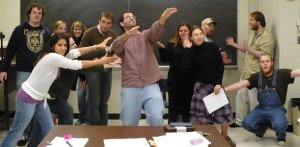
Paraphrasing: K – adult
• Have the children stand up or sit in a circle
• Turn to the student on your left and ask a question – example: What is your favorite color? Or holiday or fruit or game and so forth
• The student gives an answer [example: red]
• Student who asks the question repeats the answer back to the student – example: What is your favorite color Lisa? Lisa: My favorite color is red – Student repeats Lisa’s favorite color is red
• All around the circle until everyone has had a chance to ask and paraphrase
• Reflective questions could be asked such as – What similarities did you notice?
Spider Web: K – adult
For this energizer you need a ball of wool.
• Holding a ball of wool have the students begin by stating their name or something pertaining to themselves or something related to the lesson – example: My name is Nancy, I love to walk.
• The student [Nancy] is than required to pass the yarn to another student
• This process goes around until all the students have had a turn
• If time permits the yarn can be passed in reverse and the student is required to say the name out loud along with a part of the statement given by the last student – example: Nancy you love to walk.
MIME EXERCISES
Mime exercises help further develop oral expression and self-esteem. By using attentiveness, students further develop their observational skills through focus and detail.
Number Freeze
• Students are grouped in assigned numbers – than given a setting by the teacher (ex.farm)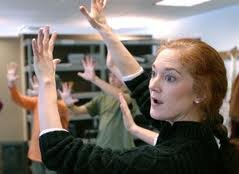
• Teacher calls a number and the students mime an action from the designated setting – example: they may act like a cow
• Next number group is called and they are to mime their designated setting while the other observe
Dialogue Tableaux
Students can group in pairs or small groups to act out a scene. The audience must espond to the scene by telling that they see.
VERBAL STRATEGIES
Verbal strategies can be used to review lessons, or for predicting, analyzing material and so forth.
Pair Sound Effects:
• Students are paired and given a letter A or B to choose from
• A makes a sound
• B coordinates the action of A’s sound
• A variation of this strategy could be A makes a sound according to B’s action
LANGUAGE
Reader’s Theatre: Students will read a story or part of a story. They will choose specific characters within the story to play out.
Storytelling
The greatest way to motivate the mind is through storytelling because through this flows the power of imagination.
Puzzle Creation
Each student is given a puzzle piece. They are responsible for writing or drawing a short story about a particular area of interest. This could be related to math, science, social studies and so forth. The students use their puzzle piece connecting it to the match.
Math
Fraction Mime: After introducing the concept of fractions, use an open space to have the whole group practice dividing themselves up to solve problems that are given: divide in half, fourths, thirds. When numbers are uneven, ask how this can be shown.
BIBLIOGRAPHY:
1. Gibbs, Jeanne. (2001) Tribes A New Way of Learning and Being Together. Windsor: CenterSource Systems
2. Cornett, Claudia E. and Katharine L. Smithrim. The arts as meaning makers. Toronto, Ontario: Pearson Education Canada Inc., 2001.
NEW ‘SIMCITY’ TRIES TO LINK WITH SCHOOLS
SF Chronicle Business & Technology
Benny Evangelista – 03/05/2013
The first new version of “SimCity” in 10 years hit the streets Tuesday, and along with it comes a new effort to create classroom lesson plans that use video games to help students hone their science, technology, engineering and math skills.
The idea behind SimCity EDU, run by a nonprofit group called GlassLab, is to create ways for teachers to leverage the learning power of “SimCity” and other games to reach generations of students who are already well versed in digital technologies.
A middle school student, for example, might learn more from writing an essay about creating a successful business district in “SimCity” than just listening “to a teacher standing in front of the class, in front of a white board, trying to explain taxes and budgets,” said GlassLab General Manager Jessica Lindl.
The initiative comes at a time when the video game industry is trying to persuade the public that it is more than just a creator of violent, first-person shooter games blamed by some for incidents like December’s Sandy Hook school massacre.
Indeed, Electronic Arts and GlassLab have already been touting the educational possibilities of “SimCity” to the country’s top elected officials. The company previewed an early version of “SimCity” in January at the U.S. Conference of Mayors two days after President Obama unveiled a sweeping gun control initiative that included more studies on the effects of violence in video games.
The game was also previewed at a post-inaugural reception.
“We want to up the ante of ‘SimCity’s’ educational influence,” Lucy Bradshaw, a senior vice president of EA’s Maxis label, said at the time.
Used for decades
The popular urban planning game has been used for education and corporate training ever since Maxis, then based in Orinda, created the original “SimCity” more than two decades ago. Maxis is now a division of Electronic Arts, which published the reboot of the “SimCity” franchise. It is the first new version since 2003.
EA last July also helped launch GlassLab, a collaboration of video game industry leaders and educational experts.
The nonprofit group, based in Electronic Arts’ Redwood City headquarters, includes the Institute of Play, the Electronic Software Association, Educational Testing Service and Pearson’s Center for Digital Data.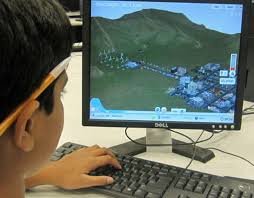
GlassLab, funded by $10.3 million in grants from the Bill & Melinda Gates Foundation and the John D. and Catherine T. MacArthur Foundation, hopes to be a central community for teachers who want to use games to boost student interest in science, tech, engineering and mathematics courses.
GlassLab is starting with “SimCity,” which turns the player into a city’s mayor and master planner responsible for building roads and other infrastructure, zoning for residential, commercial and industrial districts, budgeting city funds, levying taxes and putting out fires of all sorts.
Lesson Plans
The group has also worked with teachers from around the country to develop more than 20 lesson plans at launch. One, for example, has students selecting the three public works projects they want to build as mayor of their virtual city and then writing essays detailing whether they were successful and why.
The game is rich in data and lets players learn what their virtual citizens are thinking, so the students can “gather evidence” to support their essay conclusions, said Lindl. “SimCity’ is already a phenomenal learning tool,” she said.
GlassLab hopes to become a central online meeting ground for teachers to customize lesson plans. One drawback might be the cost of the game itself, which starts at $60. A Pew Research Center study released last week showed teachers were worried about a digital divide affecting their students, especially those in lower-income districts.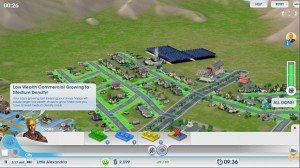
The survey found that 54 percent of advanced placement and National Writing Project teachers said almost all of their students had “sufficient access to digital tools” while they were in school, but only 18 percent had those tools available at home.
An Electronic Arts spokeswoman said the company is investigating some kind of institutional discount for educators.
Computer Training
The initiative also comes at a time when top tech executives are pushing for more computer training in schools. Last week, www.code.org, a new nonprofit organization, released a video calling for schools to institute more computer programming classes.
The star-studded video includes cameos by Microsoft co-founder Bill Gates, Facebook CEO Mark Zuckerberg, Twitter and Square co-founder Jack Dorsey and basketball player Chris Bosh of the Miami Heat. The video has been viewed more than 9 million times on YouTube.

Recent Comments